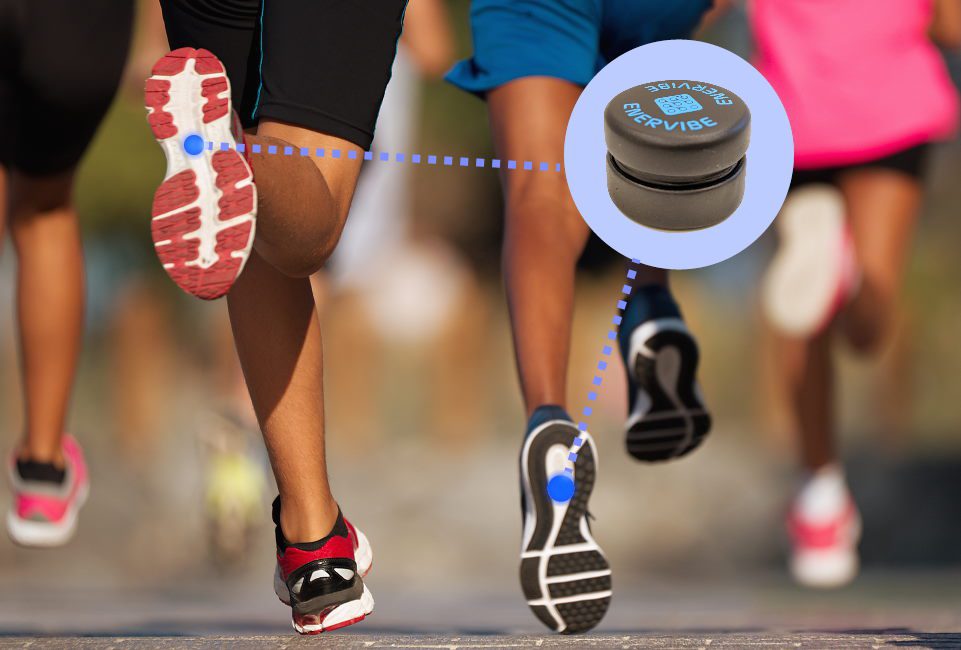Step into the Future with Energy-Harvesting Footwears

Estimated reading time: 5 minutes
Burning fossil fuels has catastrophic recurrences worldwide, releasing carbon dioxide and greenhouse gases, which are leading to climate change and global warming. The only possible solution is energy harvesting.
In recent years, technology has been driven by scientists who have identified potential in local power sources. There is a clean energy revolution in this era, and solar, wind, water, geothermal, bioenergy, and nuclear energy are being used industrially. Now, the clean energy drive is being translated towards wearable sensors, portable electronics, health monitoring systems, and wireless devices.
What is Energy Harvesting, again?
Energy harvesting is the conversion of energies that are naturally present in the environment in various forms, which could be useful. For example, wind power has helped run turbines, and that is sort of old news. But in current times, electrical energy derived from water dams is used to power electronic devices, sensors, and circuits.
These energy harvesters are being considered commercially for low-power portable electronics and wearable sensors. These methods are better than chemical batteries as they are ubiquitous, hence surpassing limited lifespan, environmental pollution, and recharging. Energy harvesting is maintenance-free and environmentally friendly.
One of the new energy sources gaining attention is mechanical motion/vibration. It is abundantly accessible everywhere. Need an example? Human motion is kinetic and has mechanical energy, which is potential and kinetic energy. It is found in the automotive industry, ocean waves, and industrial machinery.
But you know what? Motion energy harvesting is gaining momentum in the commercial market as well. One such energy harvesting method is from walking. In short, footwear should be developed with sensors and mechanisms to draw out kinetic energy.
The blog will concentrate on harnessing energy from walking and commercializing it in different helpful ways.
Methods Used in Footwear Energy Harvesting
Human walking carries a lot of energy. Now, if the power is wasted as heat and can produce 10 watts per shoe when both shoes are added, then it is 20 watts from walking alone.
The amount of energy generated by walking can charge most modern mobile devices.
However, the above are just theoretical calculations, and drawing practical results can be challenging. Scientists have devised a harvesting technique that is practical for relatively small displacements and large forces of footfall.
They have devised a power-producing footwear which has a viable possibility. There are two methods, which are explained below.
Reverse Electrowetting
The new methods of directly converting mechanical motion to electric energy are appropriate. Krupenkin developed the technique of reverse electroweting, which helps in high-power mechanical energy harvesting.
The process involves a conductive liquid that interacts with a nano-film-coated surface to produce electrical energy. The method produces high power densities from a range of mechanical forces.
However, the nano-film will require an energy source with a reasonably high frequency, which should be higher than human motion.
The researchers developed a device called BlubberBlubber and combined electrowetting with it to bridge the gap.
How does Blubber work?
The device contains no mechanical parts, but it is made up of two flat plates filled with a conductive liquid. The bottom plate is marked with tiny holes, which allow pressurized gas to enter, forming bubbles.
The bubbles now grow in size, and when making contact with the top plate, they burst. The production and bursting of bubbles create a ripple in the conductive fluid. This back and forth generates an electric charge.
Researchers have guaranteed that the method produces 10 watts/square meter relative to the generator’s surface area. They claim that theoretical estimates up to 10kW might be possible. The energy-harvesting shoes, when connected with charging cables and mobile devices, will be a power source for people in remote areas, the military, and developing countries.
Thus, walking or running can blubber the highest power density with the help of Blubber.
Road Ahead for the Technology
The scientists who developed the electrowetting technique at UW-Madison’s Mechanical Engineering Department have created a startup company called Instep Nanopower. The startup has already teamed up with Vibram to develop a demonstrator show with the energy harvesting technology embedded in the sole.
Let’s learn more about the second method. Closer home, IIT Indore has created a technological breakthrough.
Tribo- Electric Nanogenerator (TENG)
The shoe sole energy harvesting units are made with the needs of the DRDO(Defence Research Development Organisation) kept in mind. The institute has already delivered ten pairs of Tribo—Electric Nanogenerators to the organization.
Working process of Nanogenerator
The shoes are designed to harvest energy from human motion and give power to electronic devices. When they utilize tribe, specifically fluorinated ethylene propylene and Aluminium, the shoes generate power with each step. The energy is stored in a central device within the shoe sole. The device has a reliable power source for small-scale electronic circuits.
TENG can effectively convert various mechanical energies into electricity while offering the advantages of large output, low cost, simple production, and high efficiency. The shoes are also equipped with tracking technology, including RFID with a 50-meter range and a satellite-based GPS module for live location tracking.
Potential of TENG
The device gives the advantage of real-time location tracking, which can be effectively used for military personnel and enhances safety and coordination. In hindsight, it always boosts operational efficiency and safety. However, the potential is not limited to the military alone.
It can be used in civilian and industrial sectors as well. When inserted in elderly members who have Alzheimer’s, the shoes can offer peace of mind through reliable location tracking. The boots can be used to monitor children’s whereabouts during school hours. In the industrial sector, shoes are helpful for attendance and work monitoring.
Athletes can also use it. It will help improve performance and training techniques. It is a boon for trekking and mountaineering enthusiasts. The shoes’ self-powered GPS feature can provide reliable tracking during expeditions, thus ensuring safety with efficient navigation.






Responses